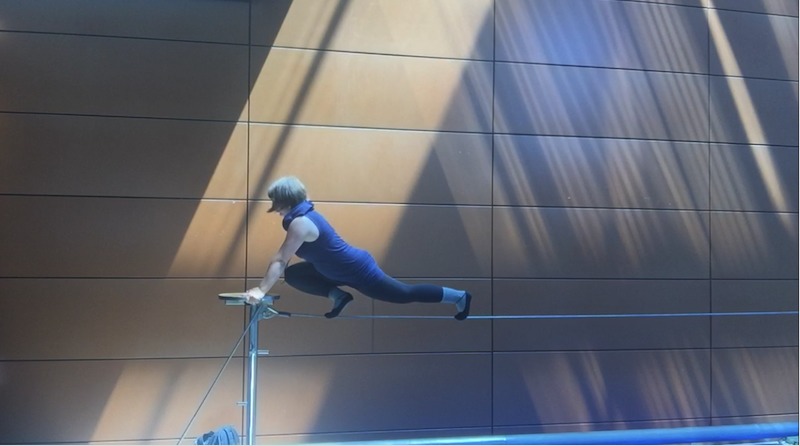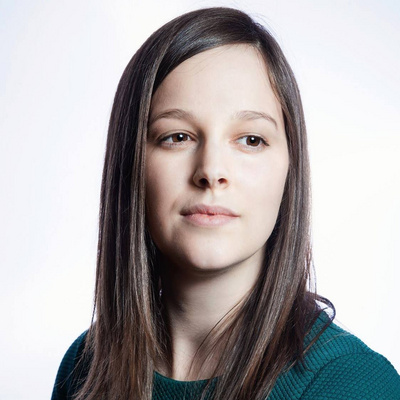The Body in Waiting

From July 3rd to 13th 2018, over twenty thinker-doers from a dozen countries, all practitioners and scholars of contemporary circus and/or other performing arts, converged onto Montréal during the Montréal Complètement cirque festival to participate in Concordia University’s intensive summer graduate seminar taught by Prof. Louis Patrick Lerouxand titled “Experiential learning in Contemporary Circus Practice: Methods in research-creation, action-research and participant observation.” For two weeks, they attended lectures and seminars in the mornings, then in the afternoon, had studio time to work on their presentations or to attend participant-observation sessions as part of a larger research project, and of course, they attended performances in the evening.
In addition to their brief research-creation presentations, the students each produced two to three blogs during this period. We are offering a selection of those blogs. Some are candid, heartfelt, others analytical, some are critical takes, others are musings on students’research. They give a snapshot of what was on people’s minds during the summer intensive.Prof. Leroux and his teaching assistant, Alisan Funk, have also contributed original material to complement the students’ blogs. Check back every Friday until the New Year for an updated article from one of the participants!
“We get into the habit of living before acquiring the habit of thinking. In that race which daily hastens us towards death, the body maintains its irreparable lead.” – Albert Camus,The Myth of Sisyphus(1942)
I’m sitting in the Atrium watching Zita Nyarady (a circus artist) work the tightrope. I’m also observing the people there (the ones who stop for a moment to become a sort of ephemeral audience) because I’m reflecting on the research-creation process and wondering if these onlookers are ready to receive such a process, or if they even have the desire to witness one at all. So here I am watching people watch Zita more than I actually pay attention to her. There’s this tension she’s building between movement and stillness. She positions herself at the end of the rope, arms outstretched, balances on one foot, and lightly places a foot on the tightrope. We wait for the other to grace the rope, for forward motion, for her to risk falling, the tension continues, but she regains balance and retreats.
This is the moment I realize that people are reacting more vividly to Zita in a state of not-doing than doing. There they remain, waiting to see if the second or third time will be when it finally happens. There’s a quality of frustration with this state of waiting she’s imposed, which fades into disappointment. Yet, they wait a bit anyway, up until they tell themselves that she will never make it across, that they will have waited for nothing, and they will leave. The tension she’s created is quite compelling. When she finally does it—when she makes it across the tightrope—people will have the satisfaction that comes with completed action, others will experience what I refer to as the “wow effect,” but no feeling is quite as strong as the anger provoked by waiting for nothing. Some will even come and ask if she will cross at all, and faced with uncertainty, they prefer to leave. The process towards her eventual success is of no interest to them, they want results. An effect must be produced.
“At work, first there is sublimation in that the body is no longer a sphere of pleasure unto itself, but an instrument or tool for production. The heightened quest for ever-increasing productivity in today’s industrial societies has led to a rationalization of the body, transforming it into something with production power, or more precisely, into a cybernetic machine: a system of automated operations dictated by the reception and transmission of messages.” (Translated from the French: BERNARD, Michel. Le corps,Édition du Seuil, essays, 1995, page 12)
During a group improvisation in the first week of the seminar, I questioned some of the people who stop to watch. They were expecting something fascinating, spectacular or well done. What I reflect on, and what surprises me, is the idea that even at university, people refuse to observe research. And yet a university campus should be fertile ground for study and the learning process. I ask them (the ephemeral audience) what they think of what they saw, if they are aware of what they’rewatching (you can listen to the recordings of two such responses here and here). The reactions of these two people are totally disparate, located at different points along the spectrum of reflection. They aren’t aware of the concept of research-creation and aren’t interested in it. They don’t understand what’s unfolding before their eyes. I ask myself the question again, does the public even want to see a process, are they interested in witnessing the oscillation between practice and research? Opening up themetaphoricalhood on a project in progress lets a spectator in on moments of investigational imperfection, a project that’s not a finished product, but an endeavor. For us artist-researchers, these moments of opening up the hood are formative. They allow us to see an audience react, to have our ear to the ground. But what does the observer get out of it?
“The indiscipline is an attack onthe barrier between research and action, as well as the one that purports to isolate thought from creation. Without a doubt, research work does not create in the same way as a work of art, nor does it intercede like a militant act. But it’s how, precisely, one finds rather than only seeing a radical divide. The re-membering of disciplines flows from this preliminary question of the research-creation-action connection.” (Translated from the French: SUCHET, Myriam.Indiscipline, Éditions Nota bene, Indiscipline, 2016, p. 68)
Infatuation for the Performing Body
Heading into this seminar, several questions about our relationship to the performing body arose in my mind. The idea that we must absolutely have a spectacular experience at the circus is ludicrous to me. Even if we don’t physically attend the circus, and suddenly the circus unfolds before us, expectations are still present. People applauding during a circus act fascinate me andareproof positive of the desire for performance. A bit like how when a plane successfully lands, passengers applaud the pilot for doing their job, but no one claps their hands for a server who brings food to the table; it’s absurd, but it’s in the light of something that’s extraordinary to a person thatdraws applause.
My research focuses on the connections between technology and the various bodies of a presentation (actors, technicians, spectators). I attempt to find significant relationships that fall outside the realm of spectacular action. Does this research have value with an audience seeking a “wow effect”? A show like La Volte’sChute! comforts me in my research. They’ve used circus in a way that goes against the spectacular grain; they were themselves on stage, far and away from any mimicry. The layout of the space also allowed for the analysis of an audience’s reaction to such a show. With four-sided seating, spectators could also watch their co-spectators. I can safely say thatChute! delighted its audience. We were, however, watching a study on the falling body, with the latter being explained both theoretically and corporally. But does that mean the spectators wanted to bear witness to this kind of research unfolding before them, and that they were also aware of it? Such questions are difficult to answer because the humor of the show is quite possibly the focal point for its audience. After the curtain fell, the questions still hung in the air: what did the spectator get from watching a study on falling? More knowledge? Is that enough? Claiming to offer new knowledge to our audiences, is that enough to open up our research?
“The body’s judgment is as good as the mind’s and the body shrinks from annihilation”- Albert Camus, The Myth of Sisyphus.
Related content: Circus Summer Seminar in Montreal, Meanwhile, Backstage…, What It Means When Circus Artists Take Part in Graduate Research Courses, The More We Learn the Less I Know, A Sequence of Blogs on Expertise and Ethics, Simple Thoughts , Coffee talk with Maddy and Stacey–Finding the Intersection Between Circus & Dance,and The Male Duo in Circus, Un Poyo Rojo & Chute! All Experiential Learning in Contemporary Circus Practice Seminar articles provided were edited with the help of Caroline Fournier-Roy, M.A. student of English Literature at Concordia.
Featured image courtesy of Zita NyaradiEditor's Note: At StageLync, an international platform for the performing arts, we celebrate the diversity of our writers' backgrounds. We recognize and support their choice to use either American or British English in their articles, respecting their individual preferences and origins. This policy allows us to embrace a wide range of linguistic expressions, enriching our content and reflecting the global nature of our community.
🎧 Join us on the StageLync Podcast for inspiring stories from the world of performing arts! Tune in to hear from the creative minds who bring magic to life, both onstage and behind the scenes. 🎙️ 👉 Listen now!
